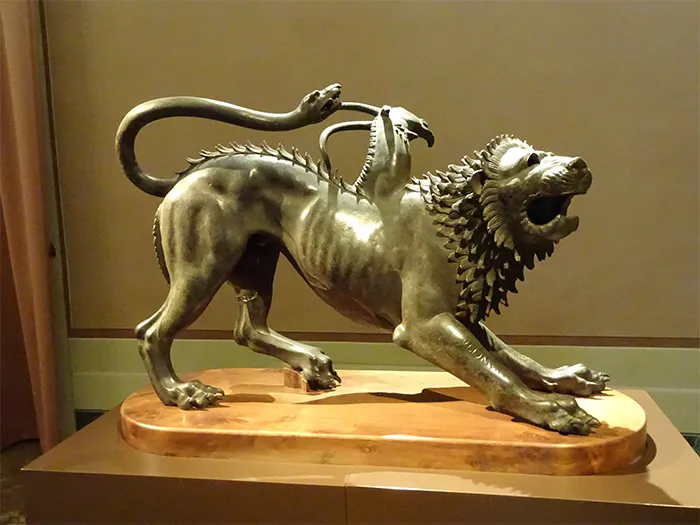the Great Pyramid Building Eye-Witness Accounts of a Legendary Construction Project
For centuries, the mystery of how Egypt built the Great Pyramid has fascinated scholars and visitors alike. Now, a remarkable discovery of ancient papyri—eye-witness records from the 4th Dynasty—is shedding new light on this iconic monument. Egyptologists Pierre Tallet and Mark Lehner explain how a combination of texts and archaeological research is revealing new secrets of this monumental feat.
ALSO READ: Water in Istanbul: past, present, and future

The Horizon of Khufu: A Monument Like No Other
The structure we call the Great Pyramid was originally known to the Ancient Egyptians as the Akhet Khufu (“Horizon of Khufu”). Built during the reign of King Khufu (c. 2633–2605 BC), the pyramid was a colossal project:
- 230 metres long on each side
- Originally 150 metres tall
- Constructed from 2.3 million stone blocks
- Contained a complex network of internal chambers and passages
Surprisingly, unlike later pyramids or tombs, the Great Pyramid’s interior lacks inscriptions—only a few graffiti markings from work gangs have been found. Until recently, these were the only texts contemporary to its construction.

The Discovery of the Papyri: A Game-Changer
In 2013, a discovery by Pierre Tallet, Professor of Egyptology at the University of Paris-Sorbonne, transformed our understanding of pyramid construction. His team unearthed the earliest papyri ever found in Egypt, not at Giza, but over 130 km away near the Red Sea at Wadi el-Jarf.
These papyri were logbooks and administrative records written by workers involved in the construction of Khufu’s pyramid complex. When compared with archaeological work at Giza led by Mark Lehner, the documents revealed striking connections and fresh insights.

Red Sea Harbours and the Search for Resources
Tallet began searching Egypt’s Red Sea coast in 2001, looking for ancient harbours that supported Egyptian maritime expeditions. Key findings included:
- Ayn Sukhna: A harbour dating to the reign of Khafre, Khufu’s son.
- Wadi el-Jarf: Rediscovered in 2008 through historical accounts and Google Earth images.
This harbour is especially significant:
- Likely constructed during the reign of Sneferu, Khufu’s father.
- Features 31 rock-cut storage galleries—far more than other sites.
- Home to a 200-metre-long jetty, possibly the world’s oldest artificial open-sea harbour.
Purpose of the Harbours
The harbours supported expeditions to the Sinai Peninsula, where copper—essential for stone-cutting tools—was mined. As construction demands grew, the local copper sources were insufficient, prompting large-scale expeditions and the need for elaborate supply chains and logistics.

Transporting Boats Across the Desert
Due to timber shortages on the Red Sea coast, boats were constructed in the Nile valley, disassembled, and then transported across the desert for reassembly. After use, the components were stored in the rock-cut galleries, which were sealed with huge stone blocks. It was between two of these blocks that the papyrus archive from Khufu’s reign was found.
The Archive of Inspector Merer
The papyri—over 30 scrolls—belonged to a 160-man work gang known as The Escort Team of “The Uraeus of Khufu is its prow”. These men were professional sailors, not slaves.
Types of Documents Found
- Logbooks detailing daily work activities
- Accounting records listing rations, tools, and other supplies
This archive offers critical evidence that skilled workers, not slaves, built the pyramids. The workers were well-fed, organized into teams (phyles), and worked year-round under royal supervision.

Who Was Merer?
- Inspector Merer led the most important phyle: the “Great” phyle, likely consisting of around 40 men.
- His logbooks cover more than a year of assignments, including:
- Transporting limestone from Tura quarries (east of the Nile)
- Delivering stone to Akhet Khufu (west of the Nile)
- Helping to construct a harbour in the Nile Delta
- Working in Sinai
A Sample Log Entry
“Inspector Merer casts off with his phyle from Tura, loaded with stone, for Akhet Khufu; spends the night at She Khufu; Day 27: sets sail from She Khufu, sails towards Akhet Khufu, loaded with stone, spends the night at Akhet Khufu…”
This log proves that boats were used to transport massive quantities of stone to Giza, reshaping how we understand the logistics behind pyramid construction.


Bringing Text and Archaeology Together
The papyri, combined with archaeological work by Mark Lehner at Giza, are revolutionizing our understanding of how Egypt built its most famous monument. These ancient logbooks provide firsthand accounts, documenting everything from material logistics to team organization—offering a vivid, real-time glimpse into one of history’s most ambitious building projects.



